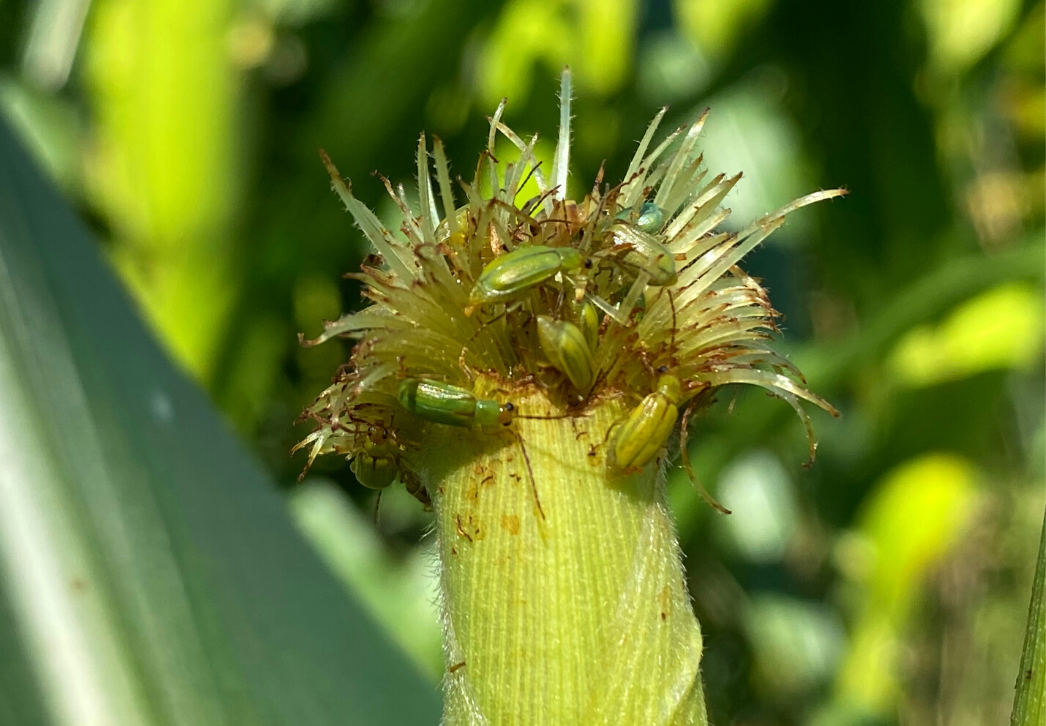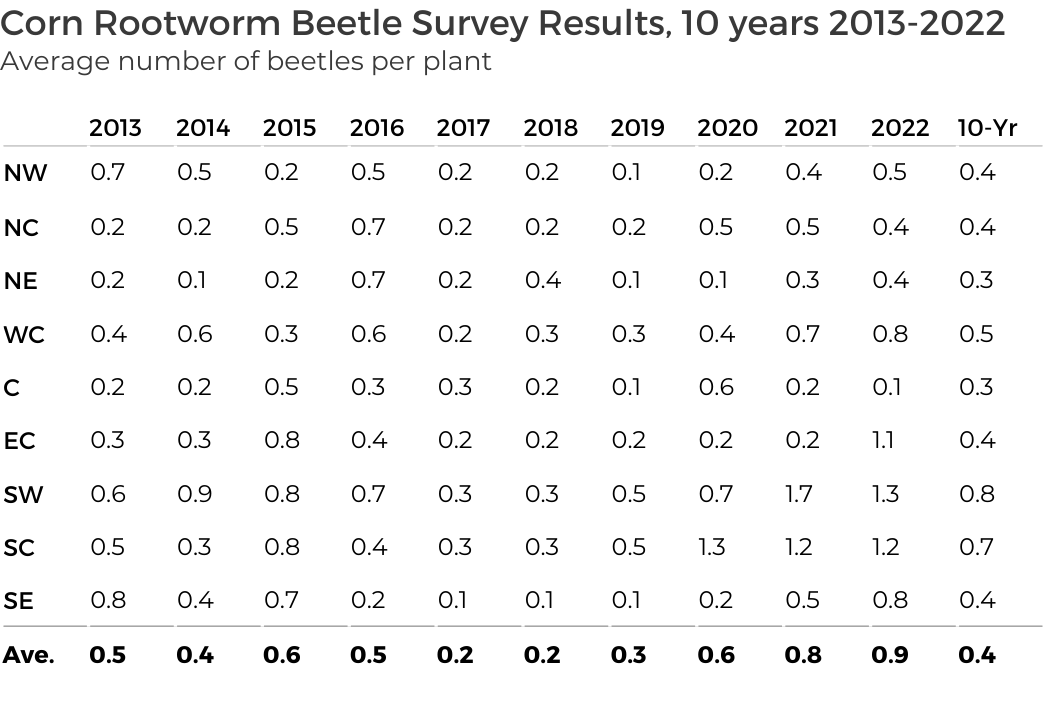|
|
Hot summer weather prevailed across Wisconsin during the last week of August. Afternoon high temperatures climbed to the mid-80s, while weekend showers and storms delivered heavy rain to several parts of the state. Rainfall amounts were most significant in the northwest where downpours of 2-4 inches occurred on August 24-25. The rain alleviated soil moisture deficits that began in July and topsoil moisture ratings are now adequate or surplus for more than 88% of crop lands, a noteworthy recovery from 72% four weeks ago when supplies had declined to the lowest level of the summer. Although the August rain has benefitted crops statewide, additional heat will be needed this month to advance corn and soybean development after a late planting season. The early September forecast calls for a continuation of above-normal temperatures, which should help push crops toward maturity and provide favorable conditions for fall fieldwork.
__________________________________
  Northern corn rootworm beetles | K. Hamilton DATCP
 
|
|
DATCP’s annual corn rootworm beetle survey was finalized this week. The survey assesses current-year beetle populations and can be used to forecast larval root damage potential in next season’s corn crop. Corn rootworm is considered the most damaging and costly pest to corn production in the U.S., causing well over $1 billion in yield losses and control costs each year.
Results of sampling throughout August indicate beetle pressure has been high across much of the southern half of Wisconsin, particularly in the three southern districts and in the west-central and east-central areas. Five of the state’s nine crop reporting districts had average beetle counts above the 0.75 beetle per plant economic threshold. The highest averages were documented in the southwest (1.3 per plant), south-central (1.2 per plant) and east-central (1.1 per plant) regions. In addition, approximately one-third, or 75 of the 229 survey sites, had beetle counts exceeding the threshold.
While the elevated corn rootworm levels recorded in southern Wisconsin were not surprising, the season’s most unexpected outcome was in the east-central district, where the average surged from 0.2 beetle per plant in 2021 to 1.1 per plant in 2022. On closer inspection, nearly three quarters of the 31 fields sampled in the east-central area had below-threshold beetle counts (<0.75 beetle per plant), suggesting that the abnormally high district average reflects extremely high counts (2.5-12.5 per plant) recorded in a small number of fields (5 of 31).
In contrast to the generally high corn rootworm pressure across the south, beetle counts in the central and northern regions were markedly lower. The 2022 averages recorded for these four districts ranged from 0.1 to 0.4 beetle per plant, with the season’s lowest average found in the central area (0.1 per plant).
Based on the survey results, this season’s high rootworm populations could translate into a greater risk for larval root damage to susceptible corn next summer, mainly in southern and central Wisconsin. Corn producers are advised to closely review their rootworm management plans for 2023 and consider crop rotation if practical. Growers opting for a rootworm trait package for root protection are reminded that planting continuous corn with the same trait should be avoided. |
|
 __________________________________
|
|
The invasive brown marmorated stink bug (BMSB) pest has been captured on sticky traps in Dane and Lafayette County apple orchards in the past two weeks, signaling the potential for fruit injury prior to harvest. The UW-Madison Insect Diagnostic Lab also recently confirmed new BMSB reports from Grant and Shawano counties for the first time. Late-summer activity is likely increasing in areas of the state where BMSB is established, and it will be important for fruit growers to remain alert for stink bugs through October.
In addition to fruit growers, property owners should also be aware of the potential for BMSB populations to swarm on sunny fall days. Similar to the boxelder bug and multicolored Asian ladybeetle, BMSB aggregates on the exterior of buildings in autumn in search of overwintering sites. Exclusion measures such as sealing cracks around windows, doors, siding and other openings are recommended for preventing BMSB from coming indoors. Insecticides should be only applied by a licensed pest control technician and considered for severe infestations. Fall nuisance insects do not reproduce inside the home or cause structural damage.
With the recent reports from Grant and Shawano counties, 39 of the state’s 72 counties now have confirmed detections of BMSB. Reproducing populations of this invasive pest have become well established in southern and eastern Wisconsin in the last 10 years, and range expansion is advancing into the western and northern areas of the state. |
|
 __________________________________
|
|
|
Corn earworm larva | K. Hamilton DATCP
 
|
|
Late-season corn earworm moth migrations into Wisconsin escalated this week. Locally heavy flights were reported from the Beaver Dam (85 moths), Mayville (277), Ripon (659 moths), and Sun Prairie NW (101 moths) monitoring locations, while eight other sites from Columbia to Marathon counties collected fewer than 20 moths per trap. A cumulative total of 2,006 moths have been captured in 13 pheromone traps as of September 1. The latest corn earworm activity signals that egg laying is likely to intensify with this late-season migration and the risk to fresh market and processing sweet corn will persist throughout September. |
|
 __________________________________
|
|
|
|